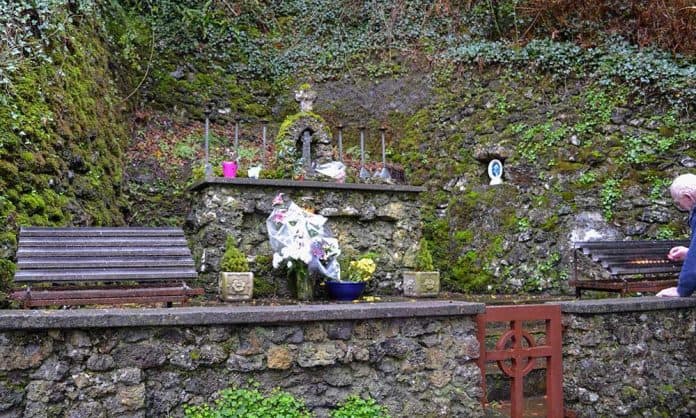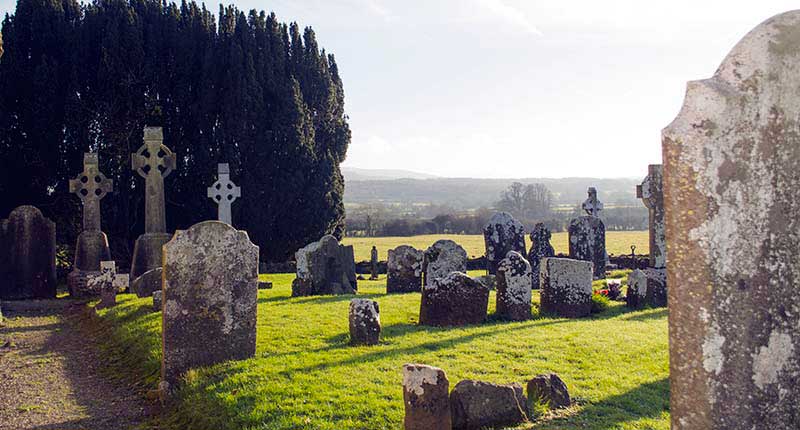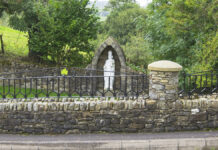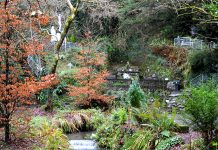
No visit to the Emerald Isle is complete without a visit to some of the country’s religious sacred sites.
For many tourists, in fact, one of their main reasons for visiting Ireland is to experience its famous sacred healing places.
There are many sacred sites all over the world, and while each location is unique, there are often similarities in the behaviour expected from visitors.
There is no single simple answer to the question of what makes a place sacred, but there are visiting guidelines that remain fairly consistent all over the world.
This article aims to introduce some of the general rules and visiting guidelines you should expect to follow when visiting Ireland’s religious sacred sites and sacred healing places.
1. Ensure You Have Permission
Before you even begin to plan your trip, ensure you have authority from the owner or manager of the site.
With some popular sites this will not be an issue, as they will be open to the public and will welcome many visitors.
If, however, you wish to visit a privately owned or lesser-known site, ensure you are permitted to visit before you make any plans.
Be prepared for a negative response, and respect the wishes of the owner or site manager if they refuse you permission to visit.
2. Leave Your Politics at Home
You might be interested in visiting a sacred site but do not agree with the teachings of the church or culture the site relates to.
Particularly among widely travelled tourists, this is to be expected from time to time.
There will always be aspects of any religion or belief system you don’t agree with, but it’s important to remain respectful at all times when visiting a sacred site.
Don’t voice any opinions that could be considered controversial or offensive when visiting sacred sites. You never know who is listening or what their belief system is, and everyone has the right to enjoy sites important to them.
3. Research the History of the Site
In order to get the most out of a visit to one of Ireland’s sacred sites, research the history of the site before you go.
This will enable you to obtain a deeper understanding of the significance of the site and to get more out of your trip.
If you are not familiar with the site’s heritage and usage and the rituals, learn everything you can to ensure you don’t act inappropriately.
You will probably find a wealth of information at the site itself, particularly if you are visiting one of Ireland’s more popular sites.
In most places, you will also find staff or volunteers who are extremely knowledgeable about the history and rituals of the site.
Don’t be afraid to ask questions, no matter how silly they seem, as most staff at such sites will be happy to help you appreciate the significance of the place.
You can often learn far more from a short, engaging conversation with an expert than from trawling the internet for an hour.
4. Try to Really Take in Your Surroundings
Particularly if you are visiting a popular site that receives a lot of visitors, it’s easy to feel overwhelmed during your visit.
If you are swept along with the crowd and don’t take a moment to step back, you might find it difficult to appreciate the significance of the site.
Try to find at least a few minutes to be alone with your thoughts and feelings so you can connect with the site.
Too many tourists approach visiting sacred (and other) sites as an exercise in ticking items off a list, but you will get far more from the experience if you just slow down a little.
Many sacred sites will have areas set aside for quiet contemplation, and you should feel free to take some time out of your visit to reflect.
Of course, you should always respect others who are doing the same thing and never interrupt or disturb anyone who is praying, meditating or simply quietly contemplating.
5. Do Not Disturb or Alter the Site in Any Way
You should take care to avoid altering or disturbing the site in any way. Do not pick up or move any item, no matter how insignificant it might seem to you.
This includes items at natural or outdoor sites or inside buildings.
If you want a memento of your visit, purchase an item at the site’s gift shop – if there is one.
Some visitors like to take holy earth or stones away with them as a souvenir – unless you are specifically told this is allowed, do not do it.
At Holy Wells, visitors often collect and bring home the sacred water, in this case it is acceptable to do so.
Do not touch any items or structures unless specifically advised it is acceptable to do so.
It should go without saying, but never leave litter or any other items at a religious or sacred site.
6. Keep to Marked Paths or Areas
At some sites, there might be some areas that are out of bounds.
This might be because they are fragile or unstable and require protection, or it could be that they are only accessible to certain groups or individuals.
Stick to only marked paths if you are at an outdoor site or to designated rooms or areas if you’re in a building. Do not venture away from public areas.
When visiting a site surrounded by a graveyard please respect your surroundings as many of these graveyards are in current use and families may be there paying their respects to their loved ones.
7. Do Not Leave Anything at the Site Without Permission
Many people like to leave offerings at sacred sites. This can be perfectly acceptable – even encouraged – at certain sites, but you shouldn’t assume it’s all right.
If you are keen to leave items at a site, ask the relevant authority or body if it’s acceptable and if there are any rules or guidelines about what can or cannot be left.
Also check if there are certain areas of the site where you should leave your offerings, and if there is anywhere you should avoid placing items.
8. Do Not Assume You Can Perform Your Own Rituals
While you might wish to perform your own religious or spiritual ritual at a site that has special significance to your religion or your belief system, you should not automatically assume this will be allowed.
If you want to perform a ritual that is even a little outside the ordinary for the site in question, check with site officials that it will be acceptable.
9. Check Before Taking Photographs
Photography might be banned in certain areas for a variety of reasons so check it’s acceptable to take your own pictures before you begin snapping away.
Alternatively, photography might be allowed at certain times but not while sacred rituals are taking place.
If you do want to take photographs, be respectful of the site and of other visitors, particularly those that involve graveyards.
Never try to take photographs if it is expressly forbidden to do so.
10. Be Sensitive to Other Visitors
You should always remember that visiting sacred sites is a significant and often deeply emotional experience for many people.
Whatever your own personal belief system or your own feelings about visiting a site, you should bear in mind everyone has the right to experience the site in their own way.
Some people will naturally want to spend longer at a site than others, so be mindful about hurrying other visitors along or behaving impatiently.
Take care to respect the privacy and peace of others if you do take photographs. Particularly important if you are carrying out ancestral research.

Be aware that some people might have travelled a great distance to visit a site that is extremely important to them – what might be a way to pass the afternoon for you might be a once-in-a-lifetime trip for someone else.
Act respectfully at all times, and don’t make excessive noise or behave in a way that disturbs other visitors.
If silence is requested in any areas or at any times, ensure you and any other members of your group observe this.
If you are travelling with children, make sure they understand how they need to behave.
While most visitors will understand that young children will sometimes make a noise or misbehave, it is your responsibility to keep any disturbance to a minimum.
Check the Site’s Guidelines
While the above are general rules that could apply to visiting any religious sacred sites or sacred healing places, most sites will have their own set of visiting guidelines.
These might be available online or in guidebooks or brochures or displayed at the site itself. Familiarise yourself with any rules before your visit if possible.
If you’re travelling with family or friends, ensure the other members of your group understand the importance of the site they are visiting and know what behaviour is expected.
Many of Ireland’s religious sacred sites and sacred healing places welcome visitors of all backgrounds and want everyone to enjoy the experience.
The visiting guidelines outlined above are intended to put to rest any concerns you might have about how to behave at important sites. You will find that representatives, guides and volunteers at most locations are extremely happy to answer any questions you might have.




